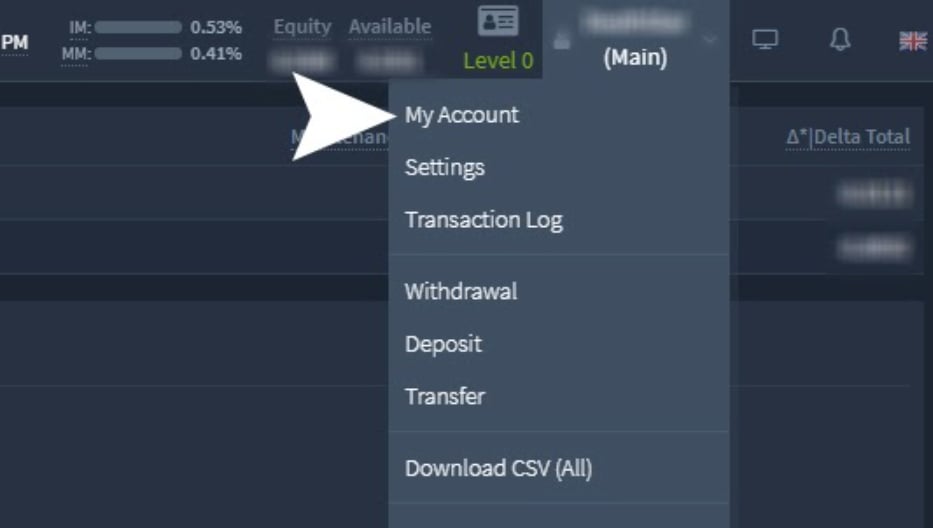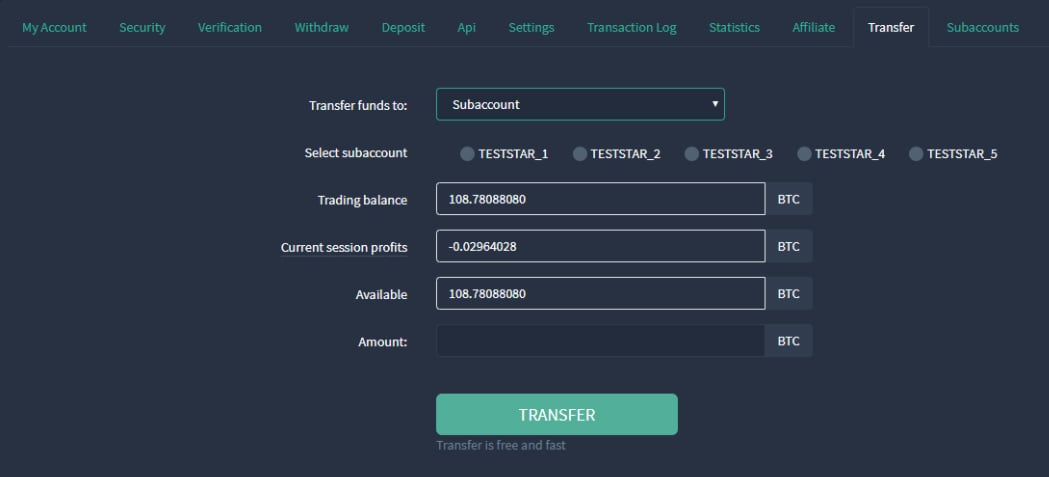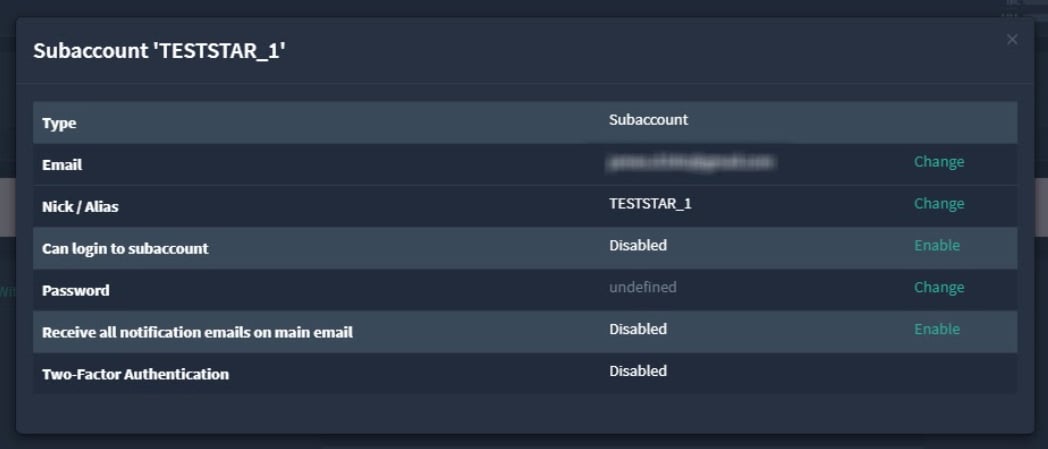All accounts on Deribit use cross leverage. This means that all the equity in the account will be used as margin for positions if necessary, and all positions share that same pool of equity. This means the entire balance of the account is potentially at risk if a leveraged position goes against the trader.
It is very common for traders to wish to partition their trading funds and positions so that it’s not all exposed to the same risk. They may wish to separate different strategies, use automated trading software for some of their trading, keep funds assigned to only certain positions, or manage their risk assigned to each position or portfolio.
Deribit has an extremely useful feature to assist traders who wish to do this. Within your Deribit account it is possible to create many subaccounts. Each of these subaccounts is accessible from the main account but is treated completely separately for equity, balance and position purposes.
Any losing positions on one account do not affect any of the other accounts. This also applies to liquidations. A liquidation in one account or subaccount will not have any effect at all on the positions or balances of any of the other subaccounts.
While the subaccounts are treated as completely separate accounts, it is possible to transfer funds back and forth between a subaccount and the corresponding main account. This can be done by navigating to the ‘Transfer’ tab on the account page. These transfers are instant and free.
Please note: the transfer tab is different to the withdrawal tab. If you try to transfer funds to a subaccount from the main account using the withdrawal tab it will not be free and will be much slower.
Subaccounts can only transfer funds to the main account, they can not withdraw funds to external wallets. However, they do have their own deposit address, so funds can be deposited directly into the subaccount from external sources.
Creating a subaccount
To create a subaccount, go to the top right menu and click ‘My Account’.

This will take you to the account page, which has several different section tabs that can be clicked. Click the one that says ‘Subaccounts’.
Once on the subaccounts page you will see an ‘Add new subaccount’ button.

Click this and a new subaccount will be created. The details of the new account will be displayed in the table on the subaccounts page, and you can also see it listed in the top right menu under the main account.
That’s it! You’ve just created a subaccount. If you need another one, simply click the button again.
Once you have at least one subaccount you can select which account you are in by clicking next to the relevant account on the subaccounts page, or in the top right menu.
Transferring funds to/from a subaccount
As we mentioned, it is possible to transfer funds between the main account and a subaccount instantly and at no cost. While in the main account (you can check which account is selected in the top right menu), click the transfer tab and the transfer page will be displayed like so:

Select ‘Subaccount’ from the drop down menu, then select the subaccount you wish to transfer funds to. Enter the amount to transfer, then click transfer. The funds will then move from the main account to the subaccount.
To move funds from the subaccount back to the main account, while in the subaccount, navigate to the ‘Transfer’ tab and enter the amount to transfer. You will not have any options for where to send the funds as the only place a subaccount can transfer funds to is the main account.
For those developing their own software solutions, it is also possible to execute these transfers via the API. You can see more detail on this in the API documentation here.
Separate login details for subaccounts
All subaccounts are always accessible from the main account, but it is also possible to set up separate login details that allow access to just the subaccount. This will be useful for companies that wish to give employees access to trade a specific subaccount only for example, without them having access to the main account, other subaccounts or withdrawals.
To change these settings, you must be logged into the main account. Once in the main account, and on the subaccounts page, click ‘Settings’ next to the relevant account, and you will see some options like this:

Here you can change:
- The email address associated with the account
- The name of the account. This is the name that will appear in the subaccounts list and in the top right menu.
- ’Can log in to subaccount’, when enabled, allows separate login details to be set up that will only give access to this one subaccount.
- Once subaccount login is enabled you can then set a password.
- And choose whether you want the email address attached to the main account to also receive any emails related to the subaccount, such as login notifications and margin warnings.
- You can also set up two factor authentication for the subaccount. It is advisable to always use 2FA when it is available, not just on your Deribit accounts.
When connecting to a subaccount via the API rather than logging in via the website, it is important to remember that each subaccount has its own API keys. These can be viewed by clicking the API tab on the account page. The API keys of the main account will not work for the subaccount.
Using subaccounts to isolate margin and control leverage
One of the most useful features of subaccounts is the ability to isolate a position or portfolio of positions, and assign a specific amount of margin to be used only for that account. For example if you have a group of positions that you only want to risk 0.5 BTC for, you can simply move 0.5 BTC to a subaccount and open the positions there. They are then isolated from any of your other accounts. Even if the main account has more funds in it, only the 0.5 BTC that was moved to the subaccount will be used to support the positions in that subaccount.
To read more about the relationship between margin, leverage and position size, take a look at our lesson on leverage and margin here.
Summary
Subaccounts offer a convenient way to isolate single positions, whole portfolios, funds, and even access. With all subaccounts being accessible from the main account, everything can be run from the Deribit website with a single log in if desired. You can quickly switch between subaccounts in the UI, or manage them all through the API with their individual API keys.
No matter how you choose to use them you can be safe in the knowledge that losing positions and even bankruptcies in one subaccount will not have a negative effect on any of the other subaccounts.
AUTHOR(S)
